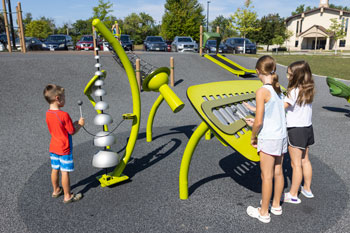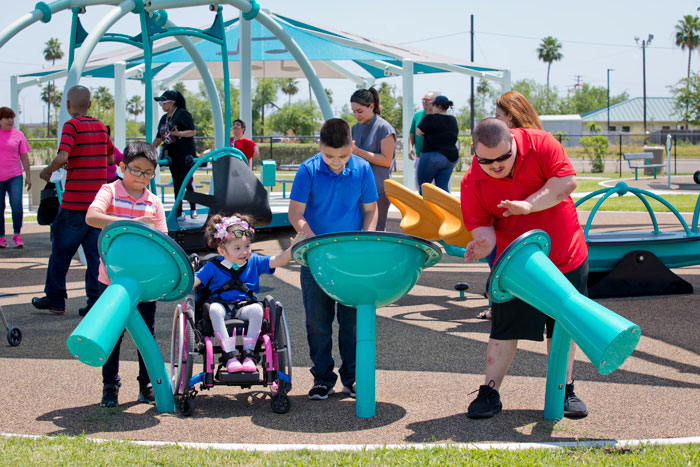Inclusive play has taken off over the past decade, with communities striving to expand play beyond mere accessibility, ensuring that children of all abilities can play alongside one another. But it’s important to understand that inclusion is for everyone. Simply ensuring that children with mobility devices can use the playground is not enough.
Q. We are planning a new playground in our community and want to ensure it is as inclusive as possible. What should we know?
A. According to the National Center for Education Statistics, the number of students who received special education services under the Individuals with Disabilities Education Act (IDEA) was 15% of all public-school students. But only 1% is attributed to orthopedic disabilities. That means that playgrounds that only focus on expanding inclusion for children using mobility devices are neglecting to address the full spectrum of children who need better access to play.
The good news is that just as inclusive play has expanded what it means for a playground to be truly accessible to all, playground designers have been taking inclusion further, expanding play opportunities for children with vision and hearing disabilities, as well as those on the autism spectrum.
Q. What should we know about expanding play opportunities for children with vision disabilities?

A. Modern inclusive playgrounds are finding new ways to allow children with vision and hearing disabilities to play alongside their peers. Playgrounds that make use of more color and contrast can help children with vision disabilities differentiate playground features. Color cues can be used to help kids see changes in elevation and understand better how to climb. Contrast between play events and the surfacing beneath can help children with limited depth perception. And solid surfaces or tightly perforated surfaces on decks make it easier for low-vision children to see that space as walkable, versus surfaces with larger perforations. Consider adding colored walkways, ground texture changes or guide ropes as well, to help children with vision impairments navigate the play space more effectively.
Q. What should we know about providing more inclusive play for children with hearing disabilities?
A. As with visual disabilities, playground designers are learning how to better accommodate children with hearing disabilities as well. For example, incorporating wider walkways and open spaces makes it easier for children who are deaf to communicate using sign language. Open layouts and an easy-to-reach high point that overlooks the entire playground can make it easier for children with hearing disabilities to gain spatial awareness and get an overview of the activities taking place.
Plastic slides can create static, which can damage cochlear implants. Including roller slides or stainless steel slides gives children who rely on cochlear implants to enjoy the act of sliding without danger.
Q. What should we know about making our playground more welcoming to children with autism or other developmental disabilities?
A. Kids with developmental disabilities or autism can easily get overwhelmed on the playground. Providing play elements that help with sensory development, including a variety of spinning, swinging and climbing activities, can also help children with these kinds of disabilities re-regulate.
A quiet space that offers a retreat from the action can also help children with autism or sensory processing differences get away from overwhelming situations and have more control over their play. These kinds of retreat spaces don’t just benefit kids with autism or sensory disabilities—they also provide a way for children who are anxious to get some respite and calm down.
For More Information
Landscape Structures Inc.
888-438-6574
www.playlsi.com



